Though I still have a post or two to catch up about our earlier Spain travels, I want to go ahead and record my early impressions of our long stay location, Ronda. Ronda is one of the white villages of Andalusia, the southern region of Spain that was controlled by the Moors until the 15th century. The white villages are called that because the buildings are white and you can see them on the mountains from quite a distance.
Ronda is unique because it is very old (going back to Roman times before the Moors took over) and overlooks an enormous picturesque gorge called El Tajo. It’s known for its iconic bridges over the gorge, especially the very photogenic Puente Nuevo (new bridge) that goes over a 400-foot drop into the canyon. Though its population is only 35,000 and few tourists take long trips here, it is a popular destination for a day trip or one-night stay and there are tons of museums, restaurants, and cultural activities to enjoy. One of the ones its most famous for is bullfighting, but we’re choosing to ignore that.
One of the main reasons we chose Ronda is for its elevation – at 2500 feet, it tends to be significantly cooler than the rest of Andalusia, which gets very hot in July, the latter part of our stay. So far, our weather bet has proven out – every day since we arrived just over a week ago has had a high of 80 degrees Fahrenheit or less with only one afternoon of rain. It’s been gorgeous. We’ve hardly had to use the AC at our Airbnb.
Besides the weather, here are a few of the other things we love so far about Ronda.
The Views and Walks
As I mentioned, Ronda is known for its gorgeous “New Bridge” (finished in 1793) over El Tajo and there are several paths and trails that lead down to great views of the bridge, down into the gorge, and along the rim. We even found a forest trail just outside the city.





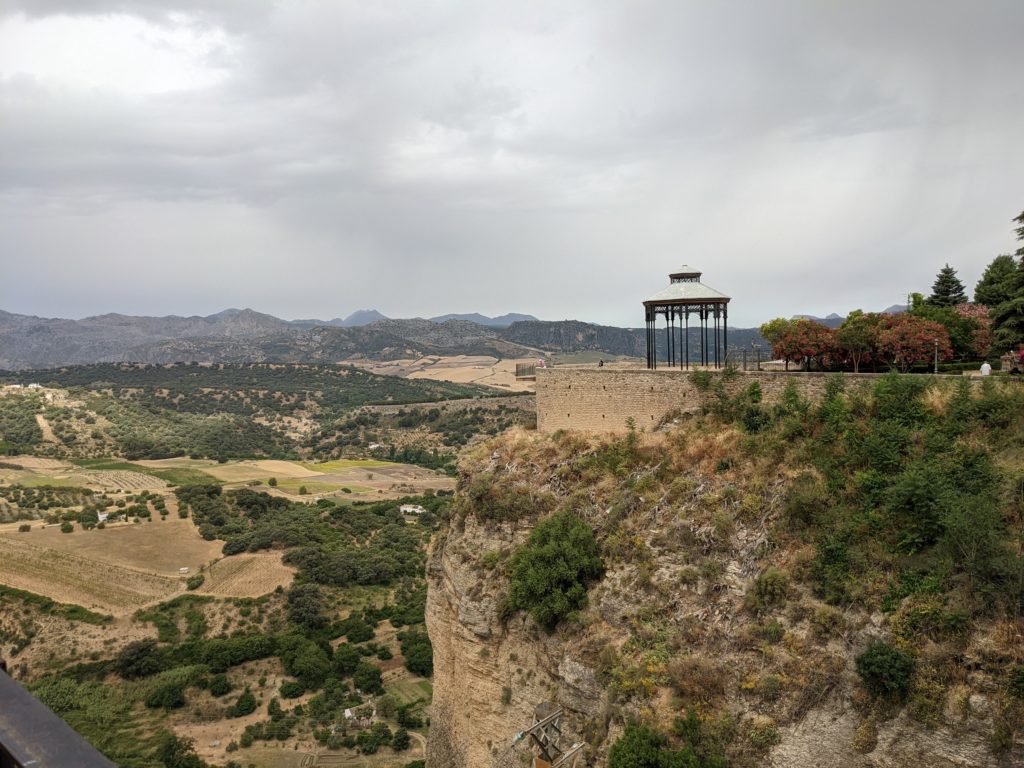









The Food
Ok, so we’ve only eaten out once in this first week in Ronda because we had so much restaurant food the week prior, but our one meal out was amazing and we’ve been very happy with our grocery store offerings here.
On Saturday we had a date night out at a local tavern called Los Cazadores Pescados Y Mariscos that was recommended by our host. We really wanted seafood, so it was an obvious choice. Reading the rave reviews, I knew a bit about what to expect – nothing in English, no menu, and the owner would bring out tapas portions of whatever they were making fresh until you were ready to stop. It sounded perfect for us. The meal was so good we took a photo of nearly every small course, though I think we missed a couple.
The owner explained each dish, which with my limited Spanish I was able to catch the gist of. Our favorite courses were the aubergine fries (which was the first thing he brought out), Malaga-style clams, and the final scallop dish (which came after we said we were finished – he asked “uno mas” and we took the hint and said yes; then he brought us two awesome dishes for that round, “una sorpresa,” he said). The other best part was the bill – four glasses of wine and a seafood feast for less than $60. It’s a meal we’ll remember for a long time and we plan to go back again before we leave Ronda. The owner said the dishes are slightly different each day, so we’re curious what we’ll have.





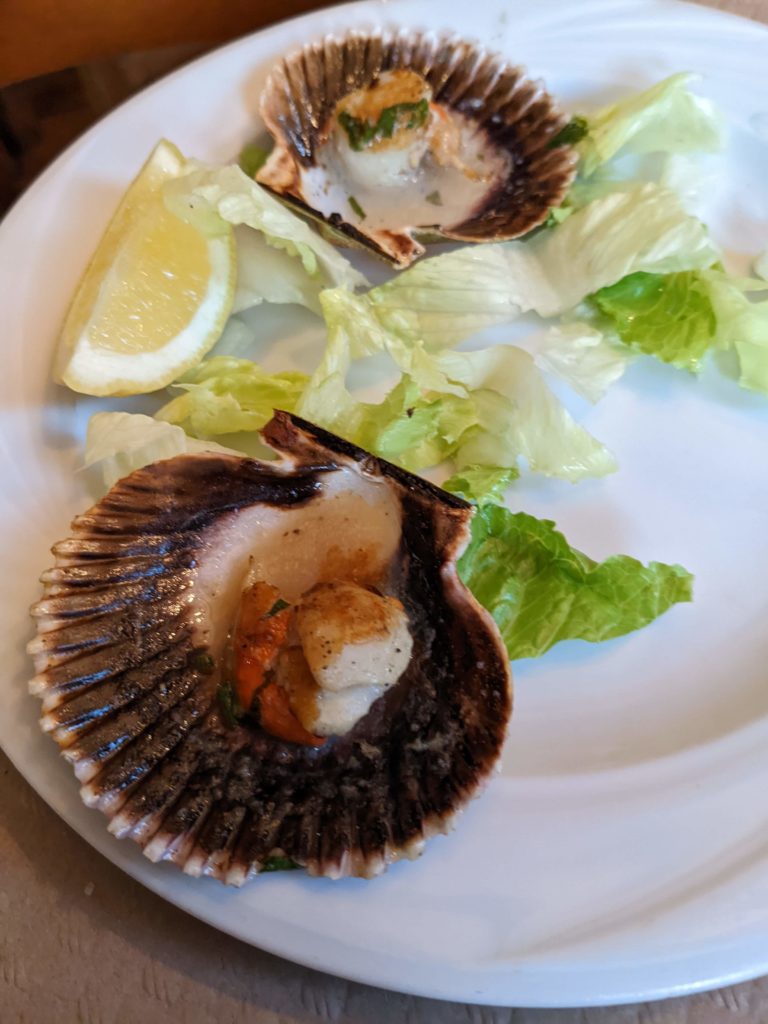
Our other foodie adventure in Ronda so far was trying the famous Jamón Ibérico de Bellota, made from acorn-fed free-range pigs. We bought 100 grams from a local specialty store less than a block from our apartment and took it with bread, cheese, grapes, and fresh-squeezed orange juice for a picnic along the wall overlooking El Tajo from Parque Alameda del Tajo. We paid about 14 euros for the 100 grams, which comes out to $70 per pound – a ridiculous amount to pay for ham, but this was really good. Not something I’d eat every day, but we were glad we tried it. Since we had some leftovers, we took it for another picnic a couple days later with some Jamón Ibérico de Cebo, the step-down version that is about a fourth of the cost. We learned that the acorn-fed high-price version really is that much better, but in the end, it’s all ham (just really, really good ham). We’re ready to return now to not eating pigs.
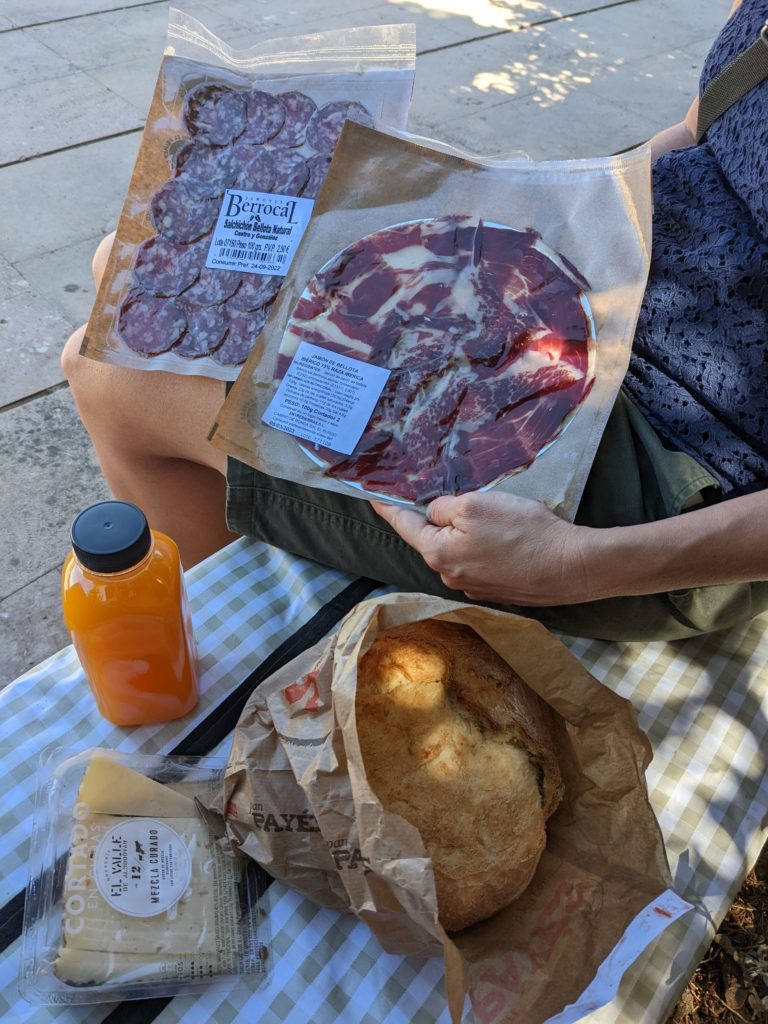

We’ve also enjoyed several drinking establishments, especially the kiosco in Alameda Park and the a wine bar near the bridge. Since originally writing this post three days ago we’ve had two other great Spanish meals, which I’ll save for my Ronda post at the end.
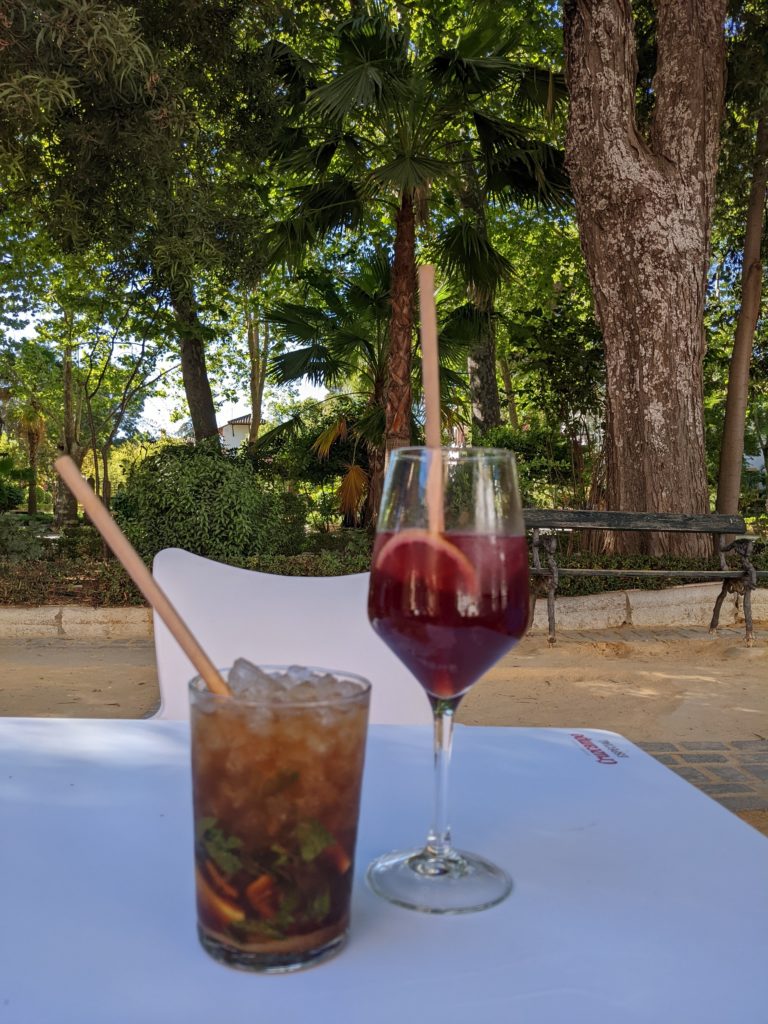
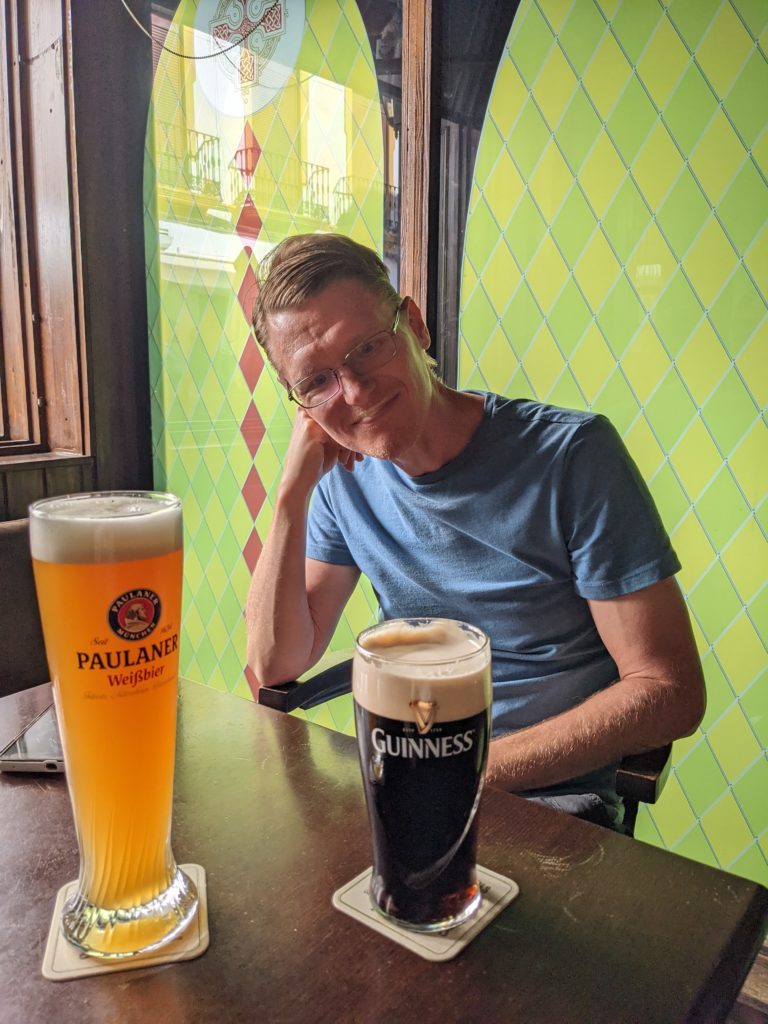

Our Apartment
We chose a fantastic Airbnb for our stay in Ronda. It is large, comfortable, and in a great location on the end of the Calle “La Bola,” Ronda’s main pedestrian street that is full of shops. We’re a 10-minute walk to the bridge, 12-minute walk to the grocery store, which is right around the corner from the track where Chad runs almost every day. The apartment even has its own workout room (that I will never use). We’ve been extremely comfortable here and it is so nice to be able to walk out our front door to bars, shops, and restaurants. We love car-free living!


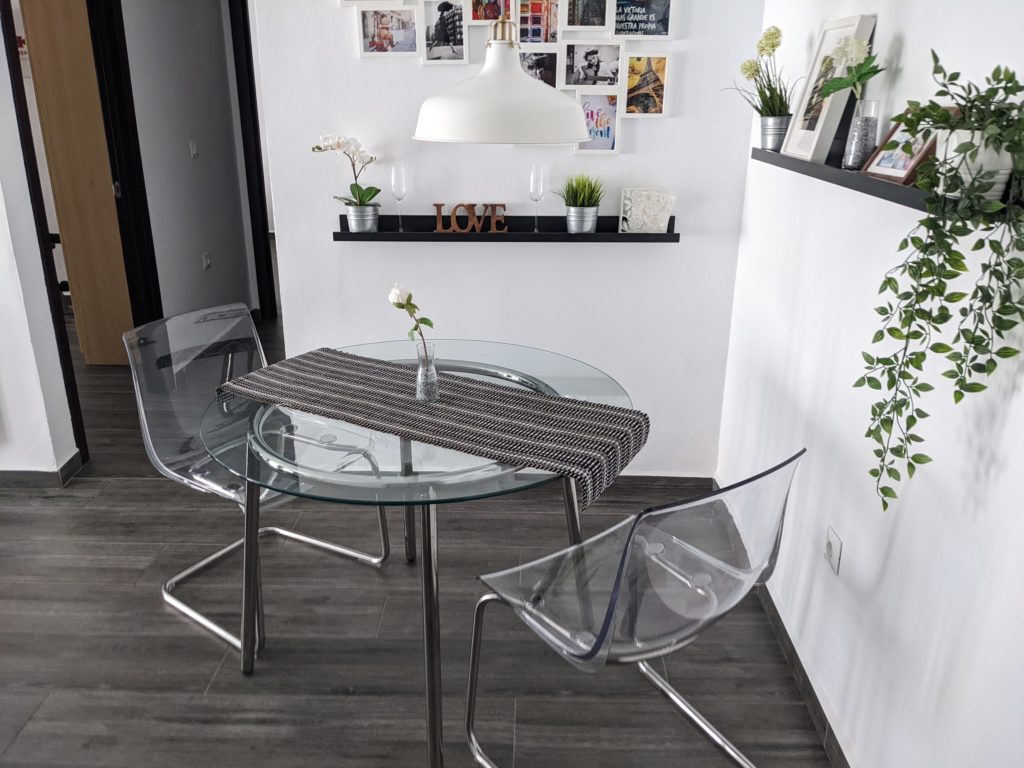


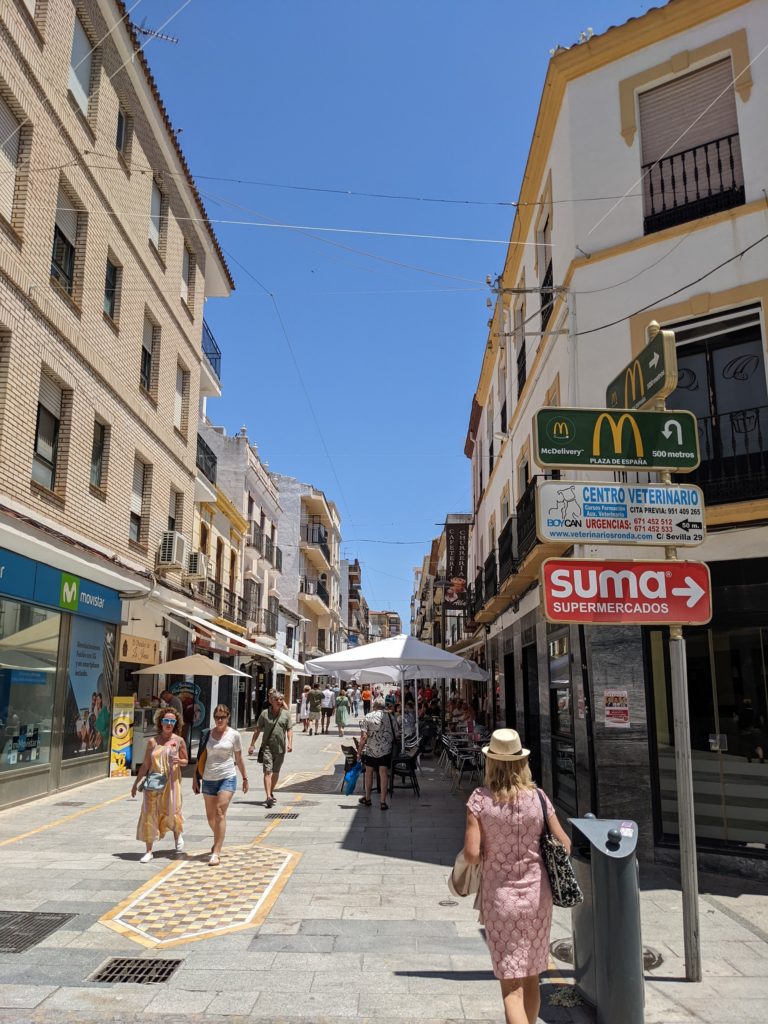
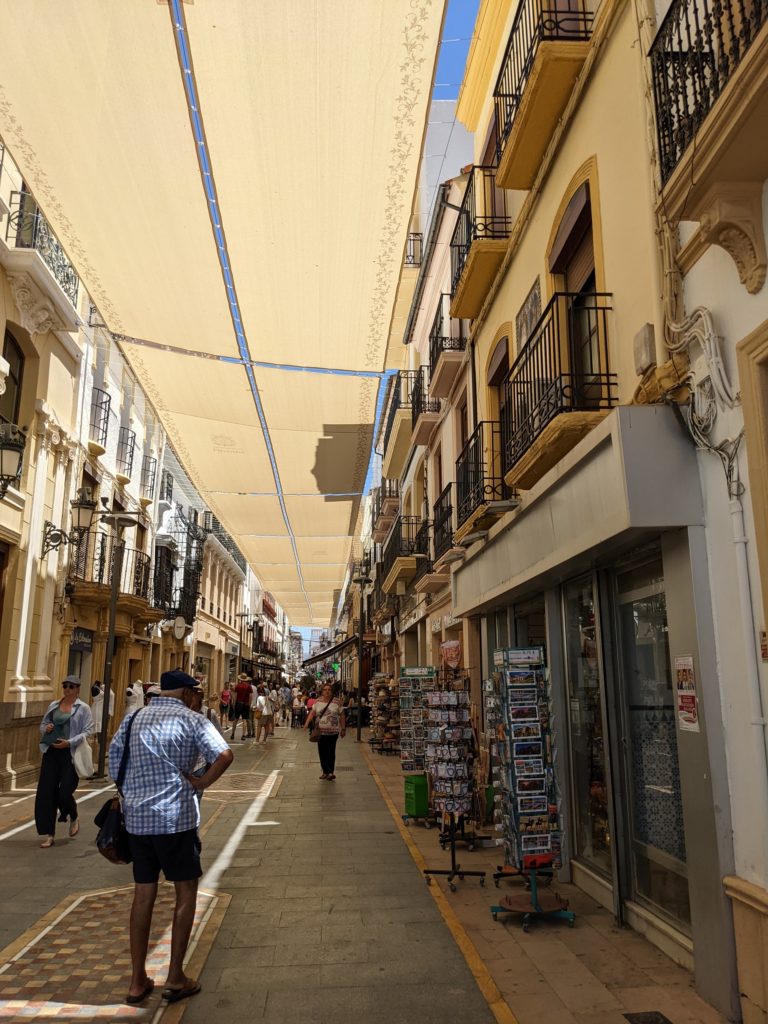
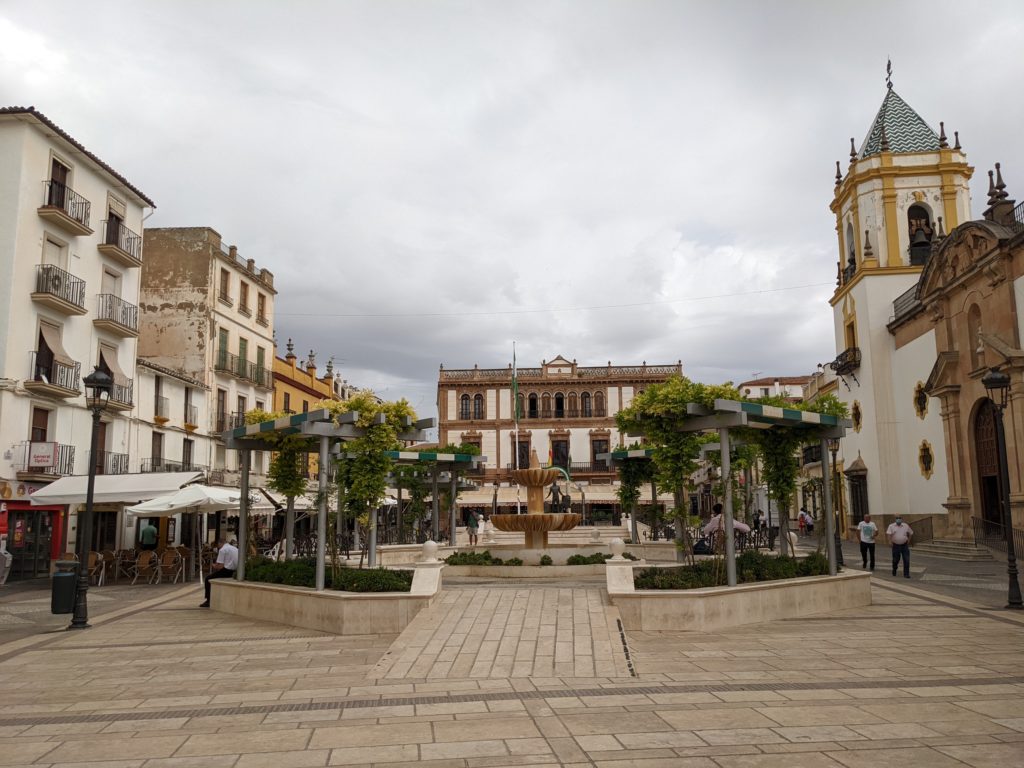

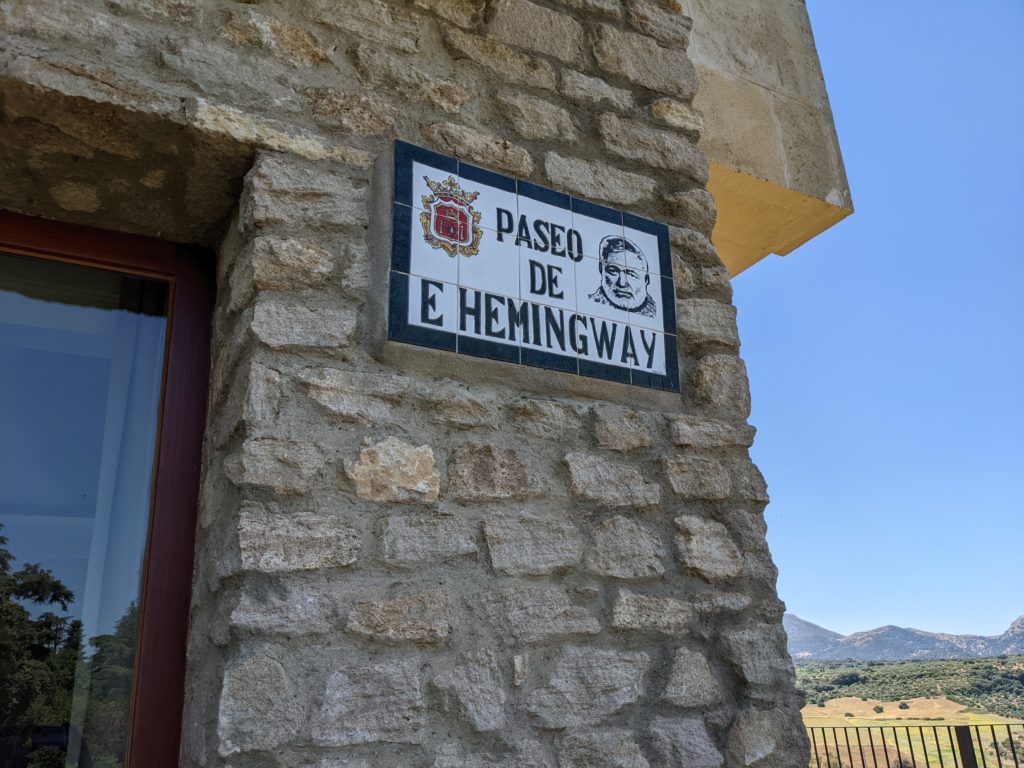


There’s much more ahead for us in Ronda (like a wonderful date night tonight with a museum visit and dinner with a view, a flamenco performance, an epic hike, and opera at the bull – these are all planned for the next week!). But ten days in, we’re extremely satisfied with our temporary home in Spain.